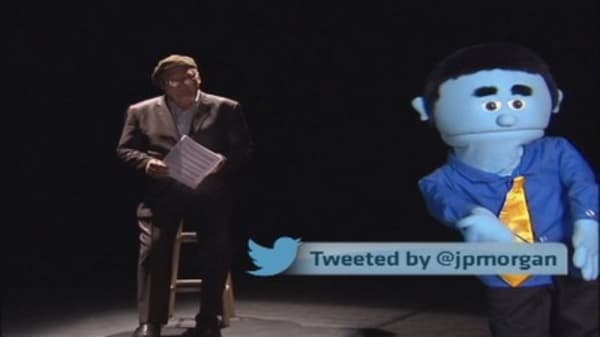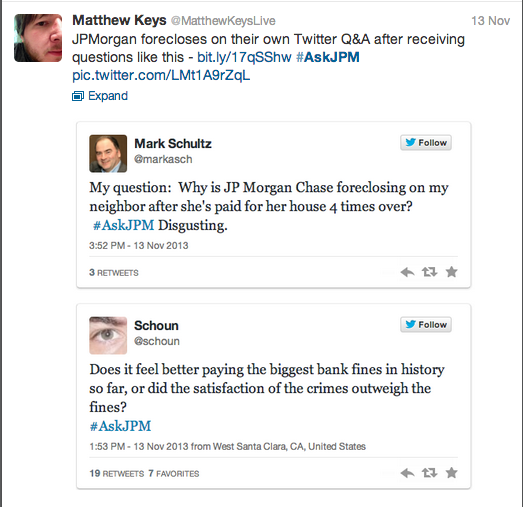4. Measure success. Regardless of the crisis, a company can actually come out of it looking better IF they're fully transparent, apologize and take corrective action (and the results of that action can be measured in real-time). For JPMorgan, #AskJPM is more than a lesson in social media; it should be a wake-up call to change how and what it communicates with its audiences. Hint: humility and transparency go a long way.
(Read more: Short sellers test the waters on Twitter)
5. Authenticity. Before embarking on a major social media endeavor — ahem, such as a Twitter Q&A — the individual involved should have a proven track record on the platform in which they plan to participate. James B. Lee Jr., JPMorgan's vice chairman, has a Twitter account but has never tweeted. It is a dormant account. He's not the right person for this type of effort.
6. Be specific. When conducting a Twitter Q&A, brands must set parameters and be as specific as possible about the nature of the chat and the topics that will be discussed. Asking a global audience to submit questions on any topic is asking for trouble, especially when in the midst of a global reputation crisis.
The #AskJPM debacle is a story of hubris, not enough empathy and a huge lack of understanding of the public's frustration and downright anger with JPMorgan's brand — all of which are recipes for disaster for any company. Will this be a wake-up call for JPMorgan or will they continue to ignore the reality swirling around them? Only time will tell; in the meantime, #AskJPM continues to go strong and the company remains steadfastly silent.
(Read more: Twitter success story: The firm that helped BatKid go viral —and save the day)
— By Ted Birkhahn
Ted Birkhahn is president of Peppercomm, a strategic marketing and communications firm based in NYC. You can follow him at @tedbirk94.





